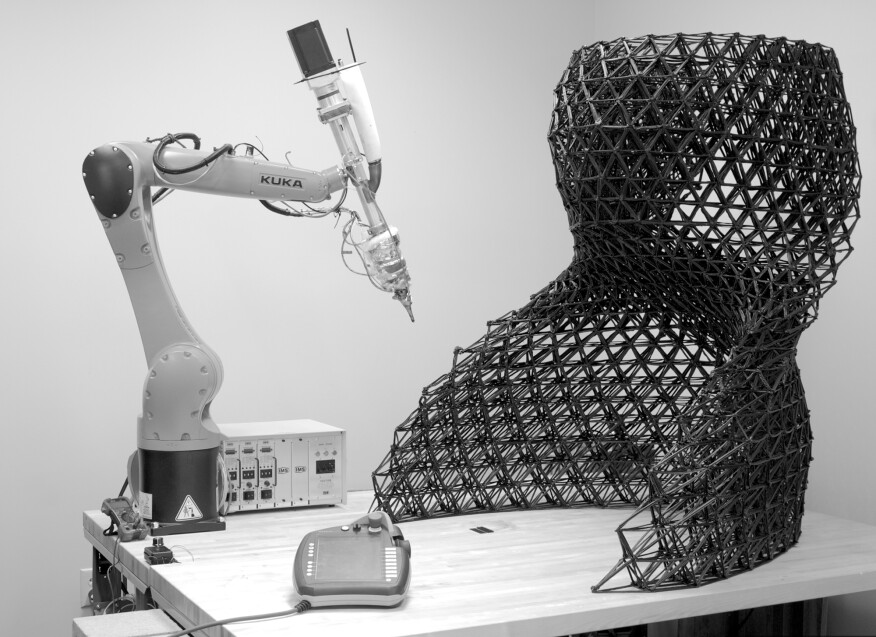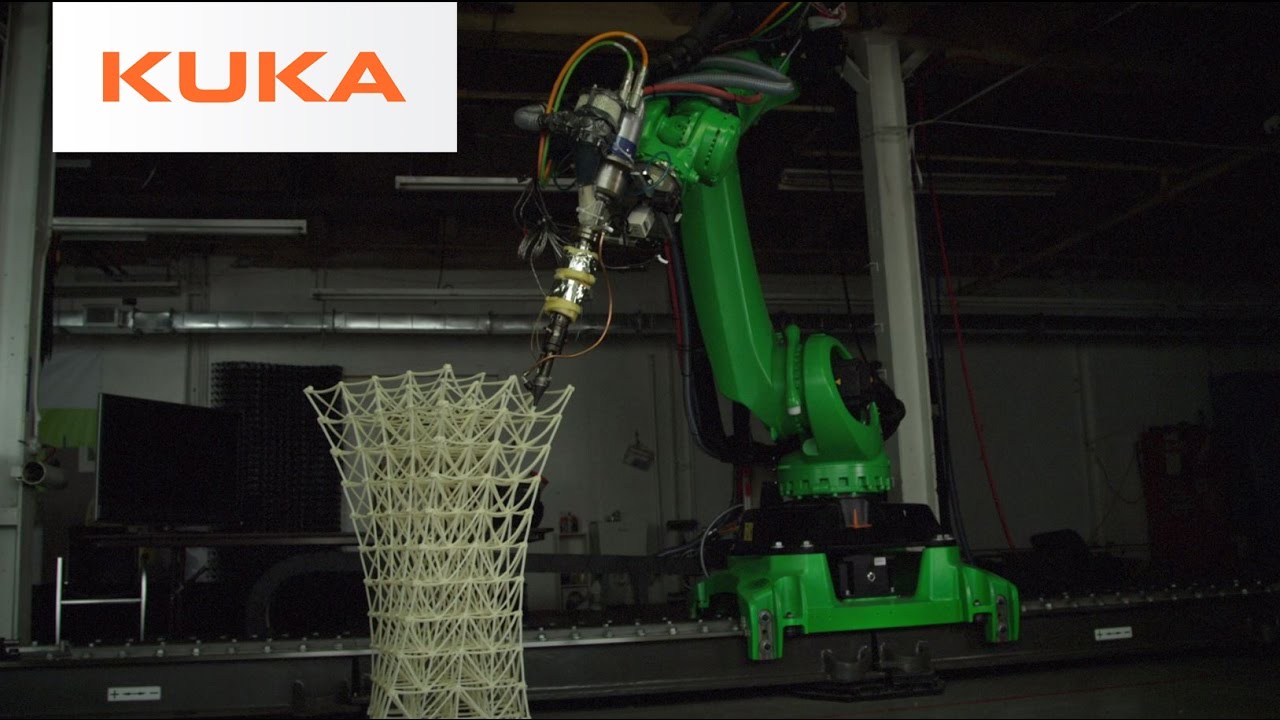3D Printing In Architecture - Revolutionizing Design And Construction
3D printing in architecture has revolutionized the way architects and builders think about design and construction. With the ability to make complicated models quickly and accurately, 3D printing has given architects a whole new world of options. They can now experiment with new shapes, textures, and materials in ways that were once impossible.
Author:George EvansApr 12, 20234.6K Shares584.8K Views

3D printing in architecturehas revolutionized the way architects and builders think about design and construction.
With the ability to quickly and accurately produce complex and intricate models, 3D printing has opened up a new world of possibilities for architects, allowing them to explore new forms, textures, and materials in ways that were once impossible.
From small-scale models to full-scale structures, 3D printing has become an integral part of the design and construction process, helping architects to create more efficient, sustainable, and visually stunning buildings.
In this article, we will explore the many ways in which 3D printing is transforming the field of architecture, from the design process to the construction site.
What Is 3D Printing?
3D printing, also known as additive manufacturing, is a process of creating a three-dimensional object from a digital file. It works by laying down successive layers of material until the object is fully formed.
This technology has been rapidly advancing and has found many applications in various industries, including architecture.
In architecture, 3D printing has revolutionized the way buildings are designed and constructed. It has made it possible to create complex geometries and shapes that were previously difficult or impossible to produce using traditional construction methods.
With 3D printing, architects can easily create scaled-down models of their designs and test them for various factors like structural integrity and functionality before moving on to the actual construction phase.
Another significant advantage of 3D printing in architecture is the ability to create custom-made building components.
This technology enables architects to create unique shapes and sizes of building components that fit perfectly into the overall design.
Additionally, 3D printing offers a more sustainable and eco-friendly option for construction by reducing material waste and energy consumption.
As the technology continues to evolve, it is likely that 3D printing will play an increasingly important role in the architecture industry.
3D Printing In Architecture
In architecture, 3D printing is being used in a variety of ways, from creating detailed building models to producing full-scale structures. Here are some of the most exciting ways 3D printing is being used in architecture:
Building Models
Architects have long used building models to help them visualize and communicate their designs to clients and builders. With 3D printing, building models can be created with greater accuracy and detail than ever before.
This allows architects to see exactly how their designs will look in the real world and make any necessary adjustments before construction begins.
Structural Components
3D printing is also being used to produce structural components for buildings, such as walls, floors, and even entire facades.
By printing these components off-site, construction time can be significantly reduced, and the risk of errors and inconsistencies in the construction process can be minimized.
Sustainable Construction
One of the most exciting applications of 3D printing in architecture is its potential for sustainable construction.
3D printing allows builders to use a variety of sustainable materials, such as recycled plastics and biodegradable composites, to create structures that are both eco-friendly and cost-effective.
How Is 3D Printing Changing The Architecture Industry?
3D printing is a revolutionary technology that is changing the way we design and construct buildings.
It is a process of creating three-dimensional objects from a digital file, by adding material layer by layer until the final product is formed.
In architecture, 3D printing has the potential to transform the way we design and construct buildings, making it faster, more efficient, and more sustainable.
Here are some of the ways in which 3D printing is changing the architecture industry:
Faster Prototyping
With 3D printing, architects can quickly create physical models of their designs, allowing them to see and test their ideas in a tangible way.
This can speed up the design process, as architects can quickly iterate and refine their designs based on feedback from clients and stakeholders.
Customization
3D printing enables architects to create highly customized and intricate designs that would be difficult or impossible to produce using traditional manufacturing methods.
This means that architects can create unique buildings that are tailored to the specific needs and preferences of their clients.
Sustainability
3D printing can help to reduce waste and minimize the environmental impact of construction. By using only the materials that are needed to create a building, 3D printing can reduce waste and minimize the use of harmful materials.
Additionally, 3D printing can be used to create structures that are optimized for energy efficiency and sustainability.
Cost Savings
3D printing can help to reduce the cost of construction by minimizing the need for expensive molds and tooling. This can make it more affordable to create complex designs and customized buildings.
Overall, 3D printing has the potential to transform the architecture industry, making it faster, more efficient, and more sustainable.
As the technology continues to evolve, we can expect to see even more innovative applications of 3D printing in architecture in the years to come.
Benefits Of 3D Printing In Architecture
The use of 3D printing in architecture offers several benefits, including:
Increased Precision And Accuracy
3D printing allows architects and builders to create highly precise and accurate designs, reducing the risk of errors and inconsistencies in the construction process.
Faster Construction Time
By printing structural components off-site, construction time can be significantly reduced, allowing projects to be completed more quickly and efficiently.
Cost Savings
3D printing can help reduce the cost of construction by using less material and minimizing waste. Additionally, by producing components off-site, labor costs can be reduced.
Design Flexibility
3D printing allows architects to create highly intricate and complex designs that would be difficult or impossible to produce using traditional construction methods.

Buildings Printed by Robots - the Future of Architecture
The Future Of 3D Printing In Architecture
As technology continues to evolve, 3D printing in architecture is likely to become even more prevalent. One potential future application is the use of 3D printers to create entire buildings on site, a process known as contour crafting.
This could dramatically reduce construction time and costs while also enabling the creation of more complex architectural designs.
Another exciting possibility is the use of 3D printing to create customized building components that are tailored to specific projects.
This could include everything from structural elements to decorative features, all of which can be designed and printed in a fraction of the time it would take using traditional manufacturing methods.
In addition to these practical applications, 3D printing in architecture also has the potential to inspire a new generation of architects and designers.
By making it easier to experiment with new forms and structures, 3D printing can enable architects to push the boundaries of what is possible in building design and construction.
Overall, the future of 3D printing in architecture is incredibly exciting, and it is likely that we will continue to see new and innovative uses for this technology in the years to come.
People Also Ask
How Is 3D Printing Used In Construction?
- 3D printing is used in construction to create prefabricated components such as walls, floors, and roofs.
- This technology allows for faster and more efficient construction, with fewer workers needed on site.
- 3D printing can also be used to create molds for concrete casting, further streamlining the construction process.
What Materials Are Used In 3D Printing In Architecture?
- The materials used in 3D printing in architecture vary depending on the specific application.
- Some common materials include plastics, metals, and composites.
- In construction, 3D printing often uses materials such as concrete and gypsum.
What Are The Limitations Of 3D Printing In Architecture?
- One limitation of 3D printing in architecture is the size of the objects that can be printed.
- Most 3D printers have a limited build volume, so larger objects must be printed in sections and assembled on site.
- Another limitation is the cost of the equipment and materials, which can be prohibitively expensive for some firms.
How Does 3D Printing Impact Sustainability In Architecture?
- 3D printing can have a positive impact on sustainability in architecture by reducing waste and energy consumption.
- By using only the necessary amount of material and minimizing the need for rework, 3D printing can reduce waste in the construction process.
- Additionally, the ability to create complex geometries and shapes with 3D printing can lead to more efficient and sustainable designs.
Final Words
3D printing has revolutionized the architecture industry, providing architects with a faster, cheaper, and more sustainable method of creating prototypes and even finished products.
It has also opened up new opportunities for customization and design flexibility, enabling architects to create complex and unique designs that were previously impossible to achieve.
As technology continues to advance, 3D printing in architecture is expected to become even more widespread, transforming the way we design and construct buildings.
With the potential to revolutionize the construction industry, 3D printing has the power to shape the future of architecture, paving the way for new and innovative building designs that are not constrained by traditional construction methods.

George Evans
Author
George Anderson, an exceptional architectural designer, envisions and brings to life structures that transcend the realm of imagination. With an unwavering passion for design and an innate eye for detail, George seamlessly blends form and function, creating immersive spaces that inspire awe.
Driven by a deep appreciation for the interplay of space, light, and materials, George's innovative approach redefines the possibilities of architectural design. His visionary compositions leave an indelible mark, evoking a sense of wonder and transforming the built environment.
George Anderson's transformative designs and unwavering dedication continue to shape the architectural landscape, pushing the boundaries of what is possible and inspiring generations to come.
Latest Articles
Popular Articles